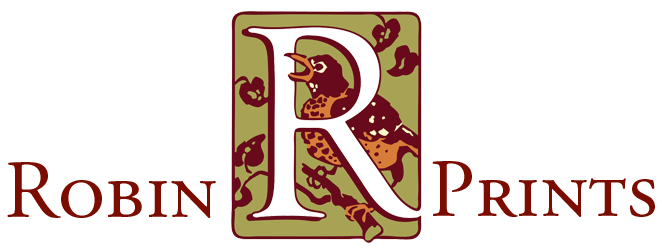Intaglio printing means transferring ink trapped in recesses of a plate onto paper. This is the opposite of relief printing, which transfers ink from a raised surface onto paper. The most common methods are:
Engraving Made by scraping or cutting marks directly into a metal or plastic plate, rubbing ink into those recesses, wiping the top surface clean, and pressing the trapped ink onto a sheet of paper.
Sharp, precise lines characterize engraving.
Etching Similar to engraving, but the plate is incised with the aid of acid. First a metal plate is coated with an acid-resistant film, then lines are scratched through that film. When immersed in acid, the lines are eaten into the metal, while the remaining surface remains clean and smooth. The protective film is removed, ink is rubbed into the acid-bitten recesses, the surface is wiped clean, and the ink is pressed onto paper.
Etched lines are often less sharp than engraved lines. They also are considerably more free and natural in gesture, since so little force is needed.
Mezzotint Imagine a tool with minute spikes being used to pit the entire surface of a copper plate. The tiny pits are so densely packed that if the plate were inked, it would print completely black. However, the artist uses various tools to burnish the plate, producing varying degrees of texture and smoothness. Where burnished completely smooth, the plate will not hold ink. Where burnished moderately, it will hold some ink, printing grey instead of black.
Mezzotint is capable of producing many subtle gradations of light and dark. Its characteristic effects are soft edges and rich, smooth tones.
Drypoint Sharp tools are used to scrape the surface of metal or plastic, resulting in a furrow. (Like a furrow of earth in a farm field, there is a depression with raised material on either side.) Ink is trapped against this displaced material, then transferred to paper.
Drypoint lines can be especially dark and rich, with soft, ragged edges.
Durability Metal engraving plates can be quite durable, without degrading over hundreds of impressions. Etching and mezzotint plates are a bit more fragile, so they may begin to degrade after one or two hundred impressions. Drypoint plates are very fragile, and may yield only 5 to 20 good impressions.
